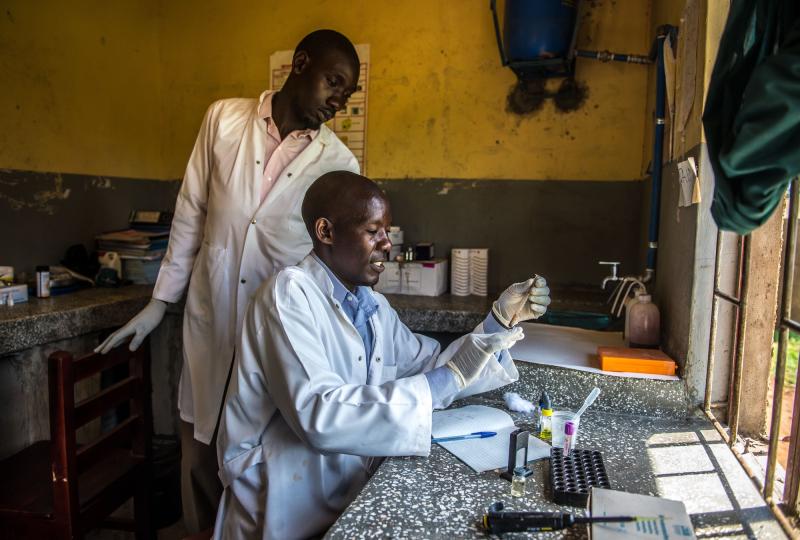Where We Work
See our interactive map


IntraHealth International’s Regional Health Integration to Enhance Services in Eastern Uganda (RHITES-E) Activity helps the government of Uganda expand access to and use of high-quality health services across 23 districts. Photo by Tommy Trenchard for IntraHealth International.
IntraHealth International’s Regional Health Integration to Enhance Services in Eastern Uganda (RHITES-E) Activity has won the 2019 CLA (Collaborate, Learn, Adapt) award from the US Agency for International Development (USAID) for its agility in boosting HIV services in the eastern region of Uganda.
In March 2018, Uganda’s Ministry of Health introduced a surge strategy, in line with the President’s Emergency Plan for AIDS Relief (PEPFAR) efforts, to find more people living with HIV and enroll them in care by improving HIV testing efficiency and linkages to treatment. To reach these goals, RHITES-E formed teams to scale up services.
But when March 2019 program data indicated persistently low levels of retention—that is, clients who stopped taking their HIV medications—because facilities were not following up with them, RHITES-E reengaged all 70 of the surge sites it supports to bring lost clients back to care.
Currently, 87% of the 1.4 million people living with HIV in Uganda know their status and are on treatment. One of the surge sites, Namakwekwe Health Center III in Uganda’s Mbale municipality, is increasing HIV testing and counseling services as part of efforts to reach UNAIDS’ fast-track goal of 95%.
The facility serves vulnerable, at-risk populations such as adolescents, young mothers, and members of key populations, which makes bringing them back to care more complex.
“Such clients are highly mobile and face serious barriers such as stigma and discrimination,” says Wadadaya Samuel, in-charge at the health center. To tackle this, facility teams collaborated with outreach teams to educate community members on the importance of antiretroviral therapy, or ART, and to address privacy issues.
Thanks to these efforts, the facility brought a total of 185 clients back to care in just under a year.
“We reorganized space in the facility to offer privacy to HIV clients as they walked in for refills or counseling,” says Nafuna Sarah, the ART focal point. “The focal persons tag along during the field and home visits to support recovery efforts and offer counseling.”
They also improved assisted partner notification, or APN, a strategy whereby a health worker interviews a person who has tested positive for HIV about their sexual partners and helps inform those partners that they may be at risk and should get tested. This includes providing privacy at the facility and conducting targeted home visits for clients and their partners.
“We had to collaborate with the community and linkage teams so they are part of the whole facility and community approach,” says Khabombwe Dorcas, APN focal point. “The village health teams, case managers, and mentors have tremendously supported clients to complete the test, treat, and track cycle.”
Thanks to these efforts, the facility brought a total of 185 clients back to care in just under a year.
RHITES-E also worked with the facility on logistics planning to avoid stock-outs and keep clients flowing in for refills and services. And the facility has integrated HIV testing services into its family planning outreach and hepatitis B screening activities. For example, laboratory officers have been trained to offer HIV tests to clients who come in for hepatitis screening.
Efforts like those at Namakwekwe Health Center III have improved ART enrollment and retention while involving the community in planning and executing HIV interventions such as mobilization, demand creation, and sensitization drives.
The Regional Health Integration to Enhance Services in Eastern Uganda (RHITES-E) Activity is funded by USAID.
Irene Mirembe contributed reporting for this article.



